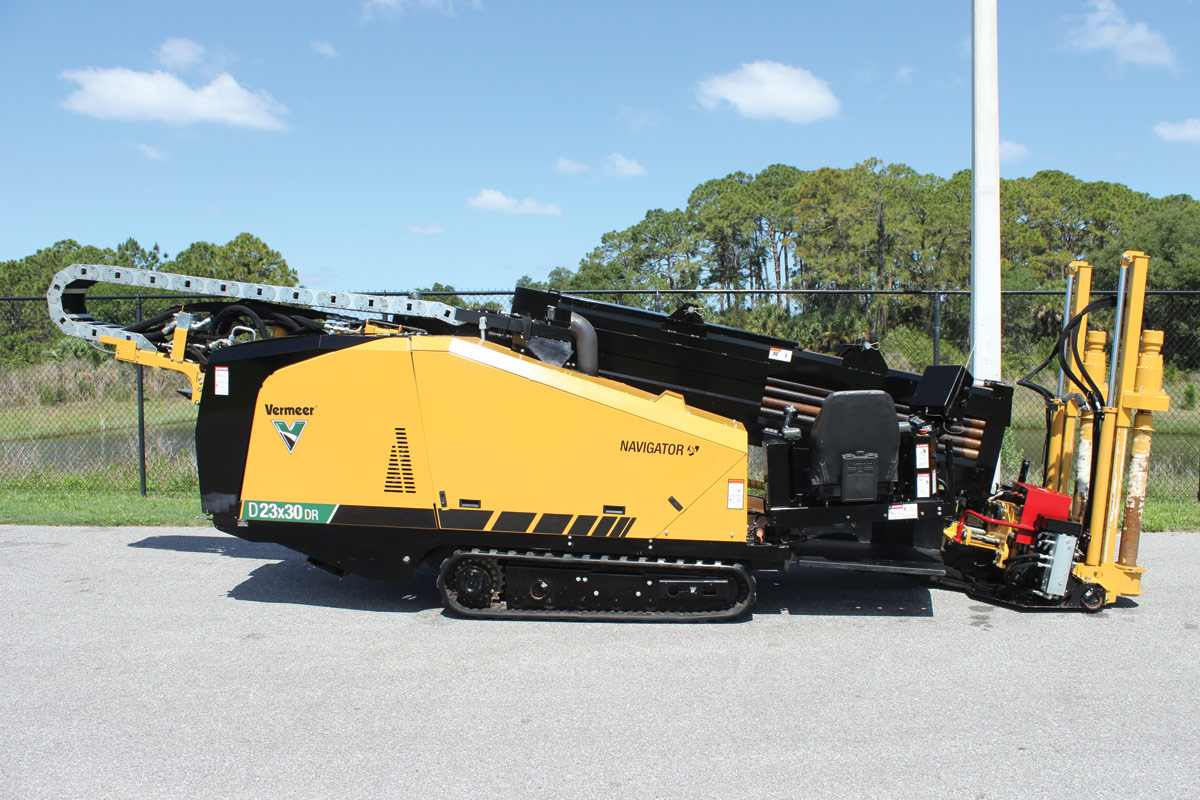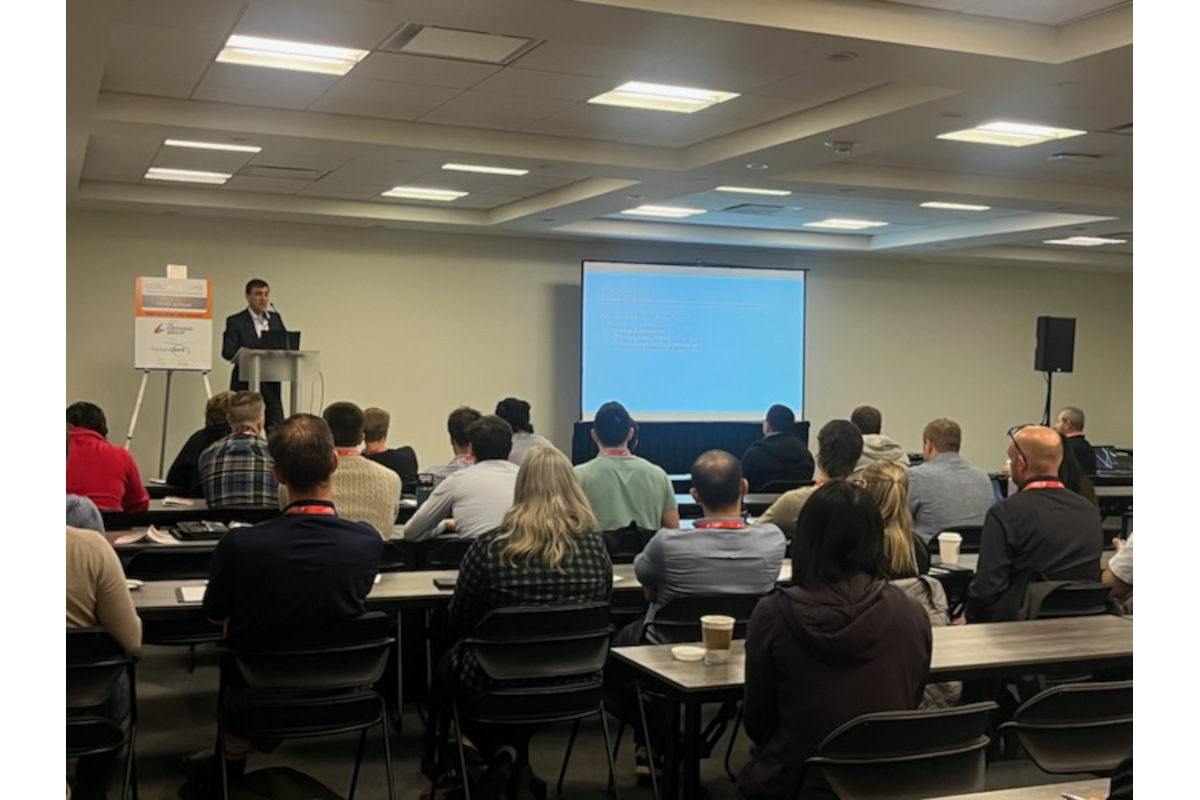Project of the Year – New Installation
October 18, 2014
 Everything about the New Jersey-New York Expansion Project is massive and complex. From the initial design to the re-design to the amount of equipment assembled to the actual pipeline installation, this project had the makings of an once-in-a-lifetime horizontal directional drilling (HDD) project.
Everything about the New Jersey-New York Expansion Project is massive and complex. From the initial design to the re-design to the amount of equipment assembled to the actual pipeline installation, this project had the makings of an once-in-a-lifetime horizontal directional drilling (HDD) project.And for the owner, engineers and contractor, it sure was.
The project is an expansion of Spectra Energy’s Texas Eastern Transmission and Algonguin Gas Transmission pipeline systems to deliver new, critically needed natural gas supplies to the New Jersey and New York areas, including Manhattan — the first high-pressure natural gas pipeline in New York City in four decades. The project utilized HDD on 40 percent of the installation (or eight of the 20 miles), allowing construction beneath waterways, highways and streets without impeding traffic and provided an additional layer of safety, given the depth of the pipe.
A critical portion of the project involved the completion of nine incredible HDD crossings that were in diameters of 30 in. (six crossings) and 42 in. (three crossings) and ranged in length from 1,707 to 8,100 ft. Some crossings averaged one to two months to complete while another (Kill Van Kull) required eight months to finish. Use of the pilot hole intersect method was required on seven of the crossings due to their enormous length and locations. The Direct Pipe method was also used to install large diameter casing.
The project involved the assembling of a massive amount of equipment including the use of ten 1.2 million-lb drilling rigs (at times used simultaneously on multiple crossings), more than 30 drill motors and 20 steering tools (INROCK), with more than 55,000 ft of drill pipe deployed. Ground conditions consisted of some serious rock, including several layers of bedrock in some of the crossings, as well as diabase, sandstone and siltstone.
From conception to completion, the project took more than five years before gas flowed and involved the sweat and efforts of everyone involved. The project is compelling, complicated and, most importantly, complete. And it has been selected as the 2014 Trenchless Technology Project of the Year for New Installation.
“[This] project was critically needed infrastructure to address the energy demand, growth, deliver cost-savings and economic value and to address the environmental imperatives of that region,” says Tina Faraca, vice president of U.S. engineering and construction for Spectra Energy. “Our project provided enough safe, reliable energy to heat the equivalent of more than an additional 2 million homes a day. It effectively doubled the amount of natural gas flowing into Manhattan.”
“This project is a significant achievement in the history of Michels and the HDD industry,” says Tim McGuire, vice president of directional crossings at Michels Corp., HDD contractor for the project. “It was extremely challenging trying to figure out how to drill many of the crossings the likes of which have never been attempted before anywhere in the industry when you consider the combined lengths, diameter, conditions and tolerances that had to be traversed let alone the backdrop for each of the worksites was among some of the most densely populated real estate in the world.”
Ted Foltz has been involved in the HDD industry since 1992 and with Michels since 2003. He served as the onsite project manager and he described the project this way: “I’ve been involved with projects with more drills on it and done in a shorter time. We did one that had 33 drills on it and were done in five months. But this one had rock and some of the [bores] were very long and most had multiple horizontal curves. Some had four or five curves. This was definitely an once-in-a-lifetime project for me.”
Planning and Planning Again
“You look at the project and say 20 miles, how hard can that be?” Faraca says. “But constructing the pipeline in and around New York City posed significant challenges.”
For a project of this size and magnitude, coordination and thorough planning are crucial to getting it off the ground. Hours of meetings were commonplace and backup plans and design strategies were a given. Planning for the unexpected was also needed (such as when Hurricane Sandy landed in New Jersey and New York in the middle of construction in October 2012).
Michels began working on the project two years before actual drilling would begin in July 2012. The Michels team, working with Spectra Energy and HDD engineering firm J.D. Hair, put together the feasibility assessment, constructability planning and site investigation. Purchase of advance tooling and equipment took place nearly a year ahead of construction to ensure availability of resources throughout.
The use of HDD was vital to Spectra Energy’s ability to obtain construction permits for the project; however, the technical degree of difficulty for most of the crossings would place the actual construction of these among some of the most challenging ever taken, McGuire says. All nine crossings had to be drilled in one of the most congested and densely populated urban areas of the world, with eight of them drilled through a mix of fill material and glacial till overburden, and around a vast array of utilities, then completed through sedimentary, metamorphic and igneous rock — sometimes all within the same crossing. These nine crossings would be considered monumental by any HDD industry standard, according to McGuire.
Design and logistics of the crossings were critical. McGuire describes the situation this way: “Early on, we had to find the best available HDD setup areas in proximity to the preferred pipeline alignment at the desired HDD crossing locations within extremely congested and populated areas. We needed to find sufficient space to stage our drilling equipment at both ends of the crossings. We also needed to verify that the links and geometric alignments of the proposed crossings were within the realm of HDD feasibility.”
He adds that “We also determined [early on] that many of the crossings were going to be broaching the upper limits of what had been achieved thus far in HDD construction, with one undoubtedly laid out in record territory for a 30-in. crossing in North America at just over 8,000 ft.”
Spectra Energy embarked on an extensive geotechnical study of the underground alignments and drilling conditions, which revealed a diverse range of near surface till soils containing cobbles and boulders and soft river sediments, as well as an abundance of existing utilities in the vicinity of the crossings. Several of the crossing routes required additional geotechnical study and the Hudson River crossing (30-in. ID with a length of 5,378 ft) necessitated multiple, significant realignments and studies before a path above the bedrock could be found that allowed the crossing to proceed.
The diverse nature of the overburden, including some contaminated soils and man-made debris in proximity to existing utilities and structures required a large diameter (48- to 60-in.) surface casing installation program before the crossings could begin. Michels used every combination of casing installation method it developed over the years to install the casings. For the 18th Street crossing (30-in. ID with a length of 4,861 ft), the Direct Pipe method with a Herrenknecht 48-in. tunneling machine was used to install the surface casing.
“In addition, the only available easements required many of the [crossings] to be routed and designed with several horizontal turns, often through solid rock and extremely tight tolerances to avoid missing the critical alignment corners,” McGuire says. As an example, he notes that the 18th Street crossing had to follow the actual roadway alignment as it was completed through solid bedrock with a 24-degree ‘S’ curve out to the marine landing point at the platform in the Hudson River.
And then there was Hurricane Sandy, the largest Atlantic hurricane on record that would arrive in New York City under a full moon when the tides were already 20 percent higher, resulting in a storm surge that was 4 ft higher than ever recorded on the Hudson. The storm forced crews to evacuate and secure equipment/personnel from the structure platform and several other drilling locations, halting construction. The storm’s impact interrupted work for 10 days.
Project officials also had to manage other constraints throughout, such as noise emission, which required extensive sound mitigation measures including walls, tent-type structures and specialized silenced construction equipment techniques such as a Direct Pipe casing installation and a specially built ‘silenced’ drilling rig. For the Hudson River and 18th Street crossings, a marine subcontractor was called on to support the design and construction of a 2.3 million-lb structure platform in the river to handle the drilling setup.
Spectra Energy is no stranger to employing HDD to install its pipelines but this project proved to be a new level of pipeline design and technology. “This was by far the most exciting and most complex project to date,” Faraca says. “We applaud Michels for this well-deserved acknowledgement by Trenchless Technology.”
“I credit Spectra Energy on this project. They took a bold initiative in taking on this project,” McGuire says. “We were enormously successful but only through careful planning and attention to detail and commitment to safety, the environment and the community. Michels was proud to be a part their construction team and believe the HDD work completed on this project will serve as a milestone for years to come of what can be achieved with this construction method.”
Sharon M. Bueno is managing editor for Trenchless Technology.





Comments are closed here.